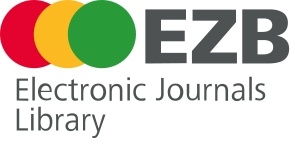Umbilical cord stem cells as regenerative therapy: advances in the treatment of type I diabetes
DOI:
https://doi.org/10.56294/shp2025212Keywords:
diabetes, insulin, stem cells, umbilical cord, regenerative medicineAbstract
Type I diabetes mellitus was presented as an autoimmune disease that destroyed the β cells of the pancreas, generating an insulin deficit and metabolic complications. Although traditional insulin treatment was necessary, it failed to stop the progression of the disease. Regenerative medicine offered new alternatives, including the use of stem cells derived from the umbilical cord. These cells showed an ability to differentiate into pancreatic cells and modulate the immune system, which helped to improve glycaemic control and reduce dependence on exogenous insulin. Clinical studies confirmed that this therapy was safe, well-tolerated and ethically acceptable, making it a promising alternative in the treatment of T1D.
References
Argentina.gob.ar. Diabetes Mellitus [Internet]. 2017 ago 9 [citado 2025 abr 4]. Disponible en: https://www.argentina.gob.ar/salud/glosario/diabetes
Armson BA, Allan DS, Casper RF. Umbilical cord blood: counselling, collection, and banking. J Obstet Gynaecol Can. 2015 Sep;37(9):832-44. doi:10.1016/S1701-2163(15)30157-2
Bieback K, Kern S, Klüter H, Eichler H. Critical parameters for the isolation of mesenchymal stem cells from umbilical cord blood. Stem Cells. 2004;22(4):625-34. doi:10.1634/stemcells.22-4-625
Eaves CJ. Hematopoietic stem cells: concepts, definitions, and the new reality. Blood. 2015 Apr 23;125(17):2605-13. doi:10.1182/blood-2014-12-570200
El-Hazmi MA, Warsy AS. Prevalence of overweight and obesity in diabetic and non-diabetic Saudis. East Mediterr Health J. 2000;6(2-3):276-82.
Ishii T, Eto K. Fetal stem cell transplantation: past, present, and future. World J Stem Cells. 2014 Sep 26;6(4):404-20. doi:10.4252/wjsc.v6.i4.404
Lu LL, Liu YJ, Yang SG, Zhao QJ, Wang X, Gong W, Han ZB, et al. Isolation and characterization of Human Umbilical Cord Mesenchymal Stem Cells with Hematopoiesis-Supportive Function and Other Potentials». Haematologica 91, n.o 8 (agosto de 2006): 1017-26.
Nicolau F, Quetglas M, Ramis JM, Monjo M, Arbós A, Gayà A, Calvo J, Muncunill J. Obtención de células madre mesenquimales a partir de cordones umbilicales procedentes de un programa altruista de donación de sangre de cordón. Inmunología (1987). 2013;:3-11.
Wang HS, Hung SC, Peng ST, Huang CC, Wei HM, Guo YJ, Fu YS, Lai MC, Chen CC. Mesenchymal stem cells in the Wharton’s jelly of the human umbilical cord. Stem Cells. 2004;22(7):1330-7. doi:10.1634/stemcells.2004-0013.
Published
Issue
Section
License
Copyright (c) 2025 Daniela Villada Escobar, Karina Bustamante Galarza (Author)

This work is licensed under a Creative Commons Attribution 4.0 International License.
The article is distributed under the Creative Commons Attribution 4.0 License. Unless otherwise stated, associated published material is distributed under the same licence.






